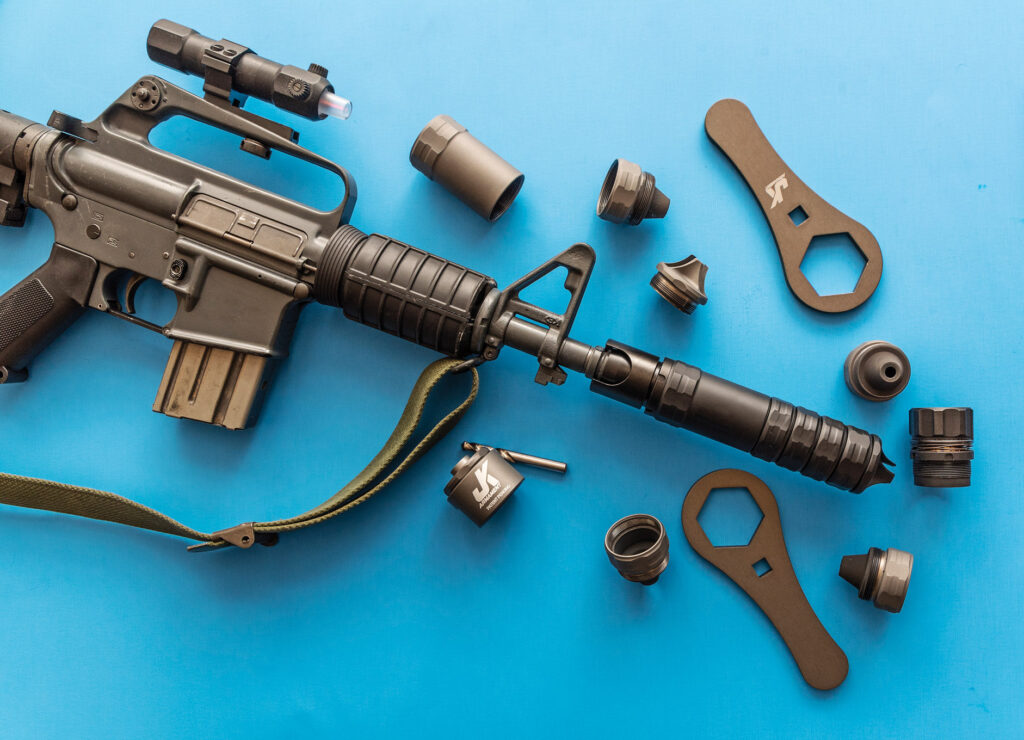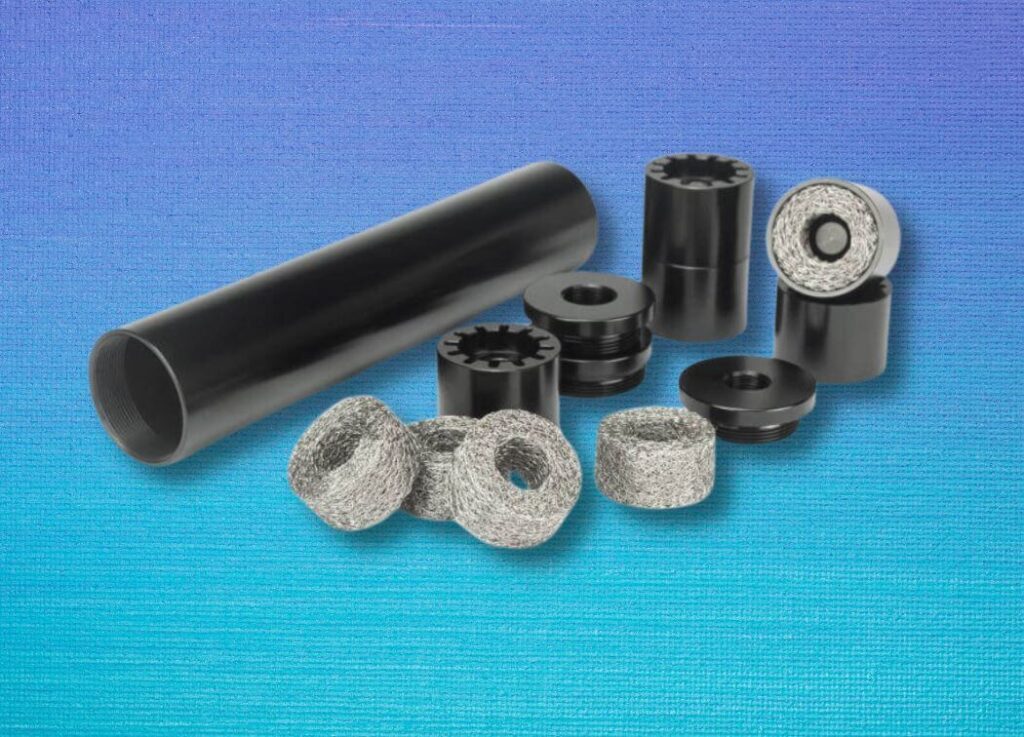The world of solvent traps and their adaptability for various purposes has grown in recent years, and among the options available, two thread sizes stand out: 1/2-28 and 5/8-24. Both sizes are commonly used for attaching solvent traps to the end of firearm barrels. In this comparative analysis, we’ll explore the differences and considerations between 1/2-28 and 5/8-24 fuel filter solvent traps.
Table of Contents
1/2-28 Fuel Filter Solvent Traps:
A 1/2-28 fuel filter solvent traps refers to a device designed to capture solvent residue when cleaning firearms that features a thread size of 1/2-28. The “1/2” indicates the outer diameter of the threaded portion in inches, while “28” specifies the number of threads per inch. This size is commonly associated with smaller-caliber firearms and is used for attaching solvent traps, muzzle devices, or suppressors to the barrel of the firearm.
5/8-24 Fuel Filter Solvent Trap:
A 5/8-24 fuel filter solvent trap, on the other hand, features a larger thread size. The “5/8” represents the outer diameter of the threaded portion in inches, while “24” indicates the number of threads per inch. This size is often associated with larger-caliber firearms and is used for attaching solvent traps, muzzle devices, or suppressors to the barrel of the firearm.
These thread sizes work with different guns. That’s the main difference. The 1/2-28 thread size is usually on small caliber guns. The 5/8-24 thread size is for bigger guns. It’s crucial to use the right thread size of the solvent trap with the matching thread size on the barrel. This guarantees a safe and correct fit.
How to Use 1/2-28 Solvent Traps and 5/8-24 Solvent Traps
Solvent traps come in two sizes: 1/2-28 and 5/8-24. The size you use depends on what type of firearm and caliber you have. Let’s explore these differences further:
1/2-28 Fuel Filter Solvent Trap:
A 1/2-28 fuel filter solvent traps is commonly used with firearms chambered in smaller calibers. These may include handguns, rifles chambered in .22LR, 9mm, .223/5.56mm, and similar calibers. Firearms with a slim barrel and smaller bullets generally use the 1/2-28 thread size.
The 1/2-28 solvent trap can connect to guns that have threaded barrels of this size. You can use it to add things like muzzle devices or suppressors.
It helps keep things safe and catches leftover cleaning stuff.
5/8-24 Solvent Trap:
The 5/8-24 solvent trap, on the other hand, is used with firearms chambered in larger calibers. This thread size is commonly found on rifles chambered in .308 Win/7.62mm, .300 Win Mag, .338 Lapua, and similar high-powered calibers. The larger thread size is necessary to accommodate the increased size and recoil of these firearms.
Firearms that have a 5/8-24 threaded barrel can use a 5/8-24 solvent trap. This will help attach suppressors and muzzle devices, or collect solvent while cleaning. The 5/8-24 thread size offers a secure and robust connection suitable for higher-powered firearms.
It is crucial to ensure that the solvent trap you choose matches the specific thread size of your firearm’s barrel. Mismatching thread sizes can result in an insecure fit, potential damage to the firearm, and compromised safety.
Firearms with 1/2-28 and 5/8-24 Threads


Firearms with 1/2-28 and 5/8-24 threads are commonly encountered in various shooting disciplines and applications. Let’s take a closer look at the firearms associated with these thread sizes:
Firearms with 1/2-28 Threads:
1/2-28 threads are commonly found on firearms chambered in smaller calibers. These may include handguns, rifles, and carbines designed for calibers such as .22LR, 9mm, .223/5.56mm, and similar sizes. Some popular firearms that utilize 1/2-28 threads for muzzle devices or suppressors include:
1. AR-15 and its variants:
The AR-15 platform is a popular choice for rifles chambered in .223/5.56mm, and many of these rifles feature a 1/2-28 threaded barrel. It allows for the attachment of muzzle brakes, flash suppressors, and sound suppressors.
2. Rimfire Rifles:
Firearms chambered in .22LR, such as the Ruger 10/22 or Smith & Wesson M&P 15-22, often have barrels threaded to 1/2-28. These firearms can accommodate suppressors or muzzle devices designed for rimfire calibers.
3. Handguns:
Certain 9mm or .45 ACP handguns have 1/2-28 threaded barrels. These barrels can have compensators, muzzle brakes, or suppressors attached to them.
Firearms with 5/8-24 Threads:
Larger guns that use powerful bullets usually have 5/8-24 threads. These firearms are typically found in long-range shooting disciplines or for hunting purposes. Examples of firearms that may feature a 5/8-24 threaded barrel include:
1. Bolt-Action Rifles:
Bolt-action rifles can have threads that measure 5/8-24 and often use cartridges like .308 Win/7.62mm, .300 Win Mag, or .338 Lapua. These threads let you add muzzle brakes, suppressors, or other things to the front of your gun.
2. Semi-Automatic Rifles:
Certain semi-automatic rifles have larger calibers, like the AR-10 which uses .308 Win/7.62mm. These rifles may have 5/8-24 threaded barrels. This allows for the attachment of muzzle devices or suppressors suitable for those calibers.
It’s important to note that while certain firearms are commonly associated with specific thread sizes, variations can exist. Always consult the firearm manufacturer’s specifications or a qualified gunsmith to confirm the thread size of a specific firearm before attempting to attach any muzzle devices or suppressors.
Can a 1/2-28 Fuel Filter Solvent Trap be Used in Place of a 5/8-24 (and Vice Versa)?


It is not recommended to utilize a 1/2-28 solvent trap in place of a 5/8-24 or vice versa without proper adapters or modifications. Here’s why:
Threaded connections, like 1/2-28 and 5/8-24, facilitate a secure and precise fit between the solvent trap or muzzle device and the firearm’s barrel. The thread size and pitch ensure proper alignment and retention of the accessory during use. Mismatching thread sizes can result in an insecure fit, potential damage to the firearm, and compromised safety.
Attempting to use a 1/2-28 Fuel Filter solvent trap on a firearm with a 5/8-24 threaded barrel would require an adapter that properly converts the threads to the desired size. While adapters exist to facilitate such conversions, they must be specifically designed and manufactured to ensure a proper and secure fit. Improperly fitted adapters or modifications can result in misalignment, instability, and potential hazards when using the firearm.
Similarly, using a 5/8-24 solvent trap on a firearm with a 1/2-28 threaded barrel would also require an appropriate adapter. Once more, ensuring the adapter’s design and manufacture maintain proper alignment, stability, and safety is crucial.
When considering the use of a solvent trap or any accessory that requires threaded attachment to a firearm, it is important to consult the manufacturer’s specifications, follow best practices, and, most importantly, comply with all applicable laws and regulations in your jurisdiction.

